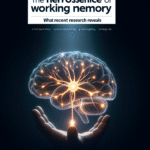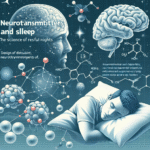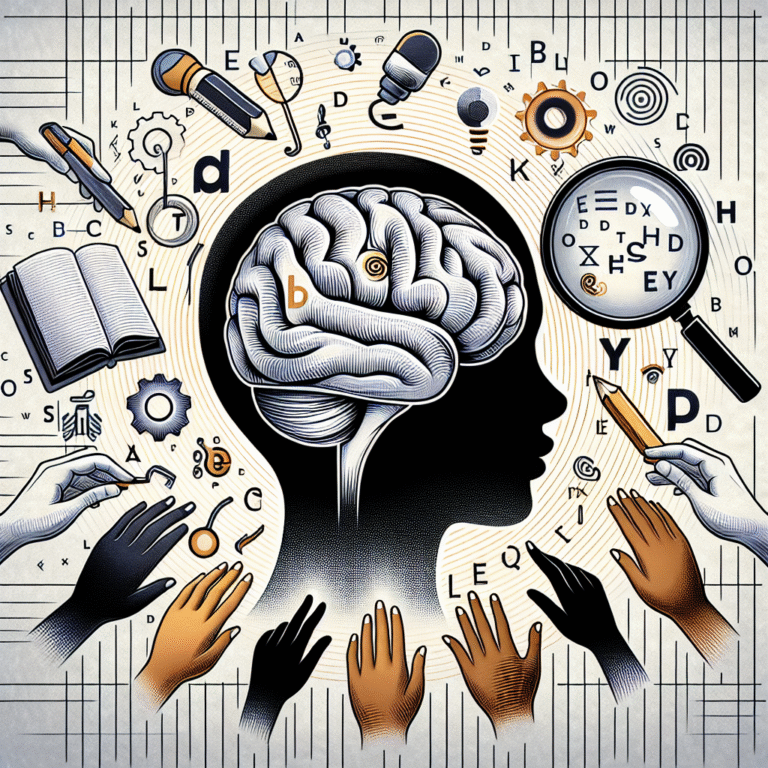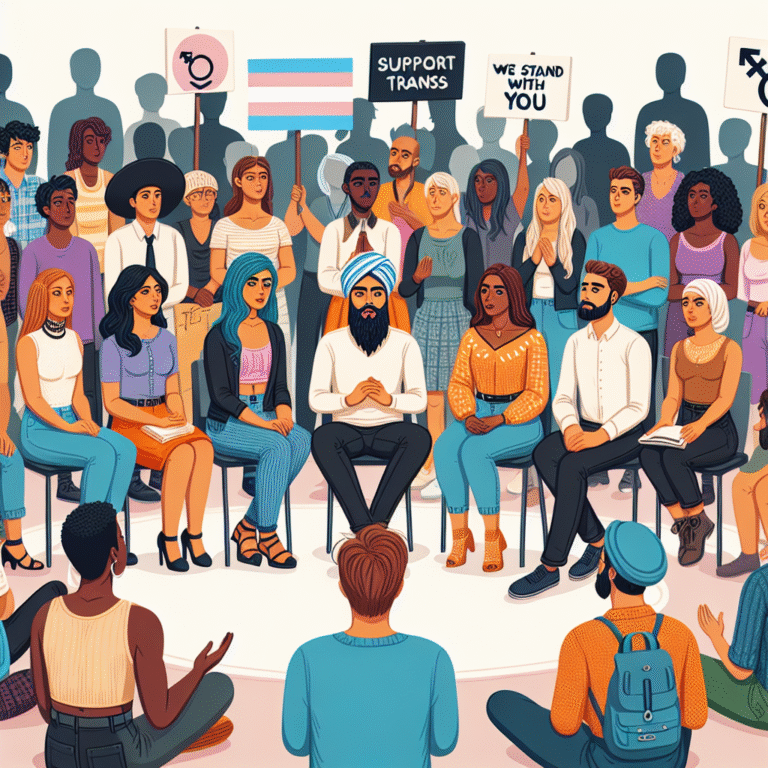
From Theory to Practice: How Teacher Training Courses are Transforming Learning for Students with Disabilities
Introduction
In the landscape of education, inclusivity has emerged as one of the most pressing priorities of our time. The push for an equitable learning environment has amplified the call for specialized teacher training courses aimed at effectively supporting students with disabilities. From Theory to Practice: How Teacher Training Courses are Transforming Learning for Students with Disabilities unravels this essential transformation, reflecting on the profound impact these courses have on educators and students alike. As we delve deeper, we will explore innovative methodologies that not only enhance teaching strategies but also foster a supportive educational atmosphere for all learners.
Understanding the Importance of Teacher Training for Disabilities
The Shift Towards Inclusive Education
Education systems worldwide are progressively shifting towards a more inclusive approach. Historically, students with disabilities were often marginalized in traditional classrooms. With a greater emphasis on educational equity, the integration of these students into standard curricula necessitated a comprehensive understanding from teachers regarding diverse learning needs.
The Role of Teacher Training
Teacher training is the backbone of this movement. Courses tailored to address the complexities of teaching students with disabilities arm educators with vital skills and knowledge. The pivotal element lies in shifting the focus from merely acquiring knowledge to implementing practical strategies in a classroom setting. This transition encapsulates the essence of From Theory to Practice: How Teacher Training Courses are Transforming Learning for Students with Disabilities.
Methodologies in Teacher Training Courses
Evidence-Based Instructional Strategies
Effective teacher training courses emphasize the use of evidence-based instructional strategies. These methods are not only validated by research but also adaptable for various learning environments. Some popular strategies include:
-
Universal Design for Learning (UDL): UDL principles guide educators in creating learning experiences that are accessible to all students by minimizing barriers to learning.
-
Differentiated Instruction: This approach tailors teaching methods to accommodate students’ individual needs, ensuring that all learners have the opportunity to thrive.
- Assistive Technology Integration: This focuses on incorporating tools such as speech-to-text software, screen readers, and communication boards that can significantly enhance learning experiences for students with disabilities.
Case Study: The Implementation of UDL
A notable case study from the University of New Hampshire illustrates the effectiveness of UDL in practice. Trained educators reported a significant increase in student engagement when UDL practices were incorporated into lesson plans. Furthermore, data indicated a marked improvement in test scores among students with disabilities, emphasizing that applied knowledge from teacher training was making a tangible difference.
| Outcome | Pre-UDL Implementation | Post-UDL Implementation |
|---|---|---|
| Student Engagement | 50% | 85% |
| Average Test Scores (with disabilities) | 65% | 75% |
Building Collaborative Environments
Effective teacher training courses also emphasize the importance of collaboration. Educators learn to work closely with specialists, parents, and the students themselves to unleash a holistic approach to education. Collaboration among these stakeholders leads to more personalized and effective strategies to address unique learning challenges.
Case Study: Collaborative Approaches in Action
In a secondary school in Boston, Massachusetts, the implementation of joint training sessions for special education and general education teachers resulted in improved communication and a unified teaching approach. As a result, both groups were able to share insights and develop customized lesson plans that met the needs of all students, leading to improved academic performance and enhanced social interactions among students of varying abilities.
The Impact of Teacher Training on Student Learning
Personalizing Education Experiences
From Theory to Practice: How Teacher Training Courses are Transforming Learning for Students with Disabilities can be observed in the realm of personalized education. Teachers equipped with the right training can develop tailored educational experiences for students, reducing frustration and increasing motivation. The increased understanding of diverse learning modalities translates to flexibility in lesson planning and classroom management.
Confidence and Competence Among Educators
Research shows that when teachers feel confident and competent in their ability to teach students with disabilities, the outcomes improve for these learners. Teacher training courses that incorporate hands-on experiences, such as simulations and role-playing activities, have proven effective in lowering anxiety and increasing teachers’ self-efficacy.
Case Study: Teacher Confidence Boost
At an educator preparation program in Minnesota, a hands-on workshop allowed future teachers to experience teaching students with disabilities through role-playing scenarios. Feedback indicated a significant boost in confidence levels post-training, with 90% of participants expressing readiness to apply their skills in real classroom situations.
Challenges in Implementing Teacher Training
Overcoming Time Constraints
One significant barrier to effective teacher training is time. Many educators report feeling overwhelmed by their existing workloads, leaving little room to attend training sessions. Thus, school districts must consider flexible training options that fit into teachers’ busy schedules.
Addressing Varied Skill Levels
Another challenge lies in addressing the diverse skill levels among educators. Some may be well-versed in inclusion tactics, while others might struggle with foundational concepts. Tailoring training programs to meet varied skill levels is crucial for overall program effectiveness.
Solutions to Common Obstacles
-
Online Training Modules: Offering online courses allows educators to learn at their own pace, accommodating their schedules while still providing robust training.
- Peer Mentorship Programs: Pairing experienced educators with those new to inclusive teaching can foster a supportive learning atmosphere and promote knowledge sharing.
Case Study: Virtual Learning Adaptations
During the pandemic, a district in California implemented virtual teacher training sessions focusing on special education strategies. Despite the initial hesitations about online learning formats, evaluations showed that 85% of participating teachers found the virtual sessions impactful, proving that adaptability in training formats is paramount to continued growth.
Conclusion: The Future of Teacher Training and Inclusivity
In summary, From Theory to Practice: How Teacher Training Courses are Transforming Learning for Students with Disabilities not only sheds light on the innovative practices emerging in teacher training but also illustrates the profound effects on student learning experiences when educators adopt these principles. The transformation is not simply about creating adapted lesson plans but reshaping the entire educational landscape to be more inclusive.
As we move forward, it’s essential for educational organizations to prioritize ongoing training and support for teachers, ensuring that they are equipped to meet the needs of all their students. Ultimately, a well-trained educator can make a world of difference, often transcending theoretical concepts to inspire real-world change in the lives of students with disabilities.
FAQs
1. What are the essential components of teacher training courses for special education?
Teacher training courses typically include modules on inclusive teaching strategies, behavior management, assistive technology, and collaboration with specialists and families.
2. How can schools overcome time constraints related to teacher training?
Schools may implement hybrid training models or offer online courses that allow teachers flexibility in completing their training, thereby fitting it into their schedules.
3. Why is evidence-based education important in training teachers for special education?
Evidence-based education ensures that teachers are trained using strategies proven effective through research, thereby increasing the likelihood of positive outcomes for students with disabilities.
4. What role does technology play in supporting students with disabilities?
Assistive technology facilitates tailored learning experiences, helping to bridge gaps in access to curriculum and resources for students with various disabilities.
5. How can educators collaborate effectively when working with students with disabilities?
Educators can collaborate through co-teaching arrangements, regular communication, and joint planning sessions, allowing them to share strategies and insights for effective instructional practices.
6. What is the impact of teacher confidence on student success?
When teachers feel confident in their ability to teach diverse learners, they are more likely to implement innovative and supportive teaching practices, which can significantly improve outcomes for students with disabilities.
Ultimately, the journey from theory to practice illustrates an exhilarating potential for transformative learning through comprehensive teacher training. As we continue to prioritize inclusive education, the impact of these courses will resonate through generations of students, paving the way for a more equitable future.
















